Construction industry is the largest energy consumer and greenhouse gas emitter, both in the developed and developing countries. We must admit the role of construction industry in the global warming issues. Keeping the social responsibility towards the future generations in mind, many new innovative products are coming in to the market. One such product is glass ceramic. Glass ceramic stands as a true performance circular economy material which offers a wide range of applications bringing full creative freedom and functionality. The main advantage of glass ceramic is not only its contribution to the environment, but of a unique, exclusive and durable material, produced under stringent quality standards which also offers an exciting aesthetics. This glass ceramic material is almost 100% recyclable. Glass ceramic plays an important role in the careful use of natural resources and improvement of the sustainability balance in building projects and design objects. This is an enormously...
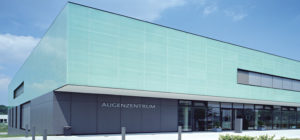
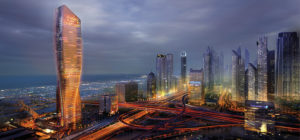
Wasl Tower – Reinventing Clay for High-Rise Façade
A New Kind Of High-Rise For Dubai In 2013, UNStudio, in collaboration with Werner Sobek, was invited by the wasl Development Group to design a new kind of high-rise for the city of Dubai that would act as a benchmark for both the region and for the wasl Development Group itself. The project is located in an exceptional central position in Dubai’s network - along Sheikh Zayed Road, the main thoroughfare that connects the Emirates north to south - and directly opposite the Burj Khalifa and when completed will be one of the world’s tallest ceramic façades. Dubai’s reputation as a transfer hub is rapidly transforming into one of a long stay destination, especially during the cooler winter months. The city also enjoys an impressive infrastructure. When arriving at night by plane or car, it resembles an ever-evolving organism in the dark desert - connecting places, people and culture. The...
Posted on: 18 May 2020
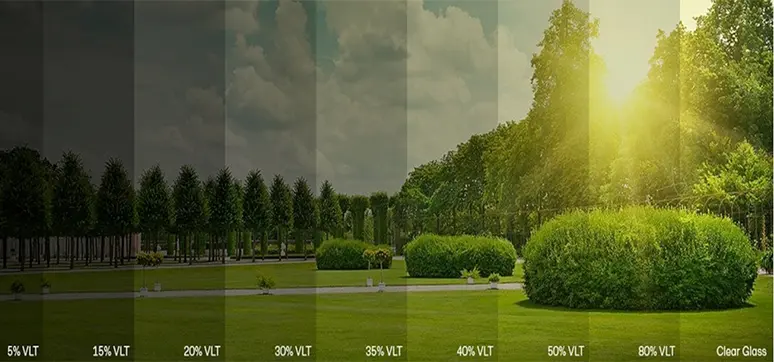
Future Façades Shall be Seeing Rapid Integration of Renewable Energy Technologies, such as Photovoltaic Panels or Solar-Integrated Cladding
As smart building technologies become more prevalent, how do you see façades integrating with these systems to enhance overall building performance? Smart technologies today are not just prevalent but have become an integral part of our lives. With apps controlling the lights, air-conditioning, entertainment, coffee machines, and whatnot, building fenestrations are not untouched by smart technologies today. From integrated blinds within IGUs, digitally controlled and programmed electro-chromatic glass products, to dynamic shading devices that can change orientation, position, and location, to daring adventures where roofs and façades are designed to function dynamically to control light and visibility, façades have come a long way. All these features being connected to building automation and maintenance systems make it even more relevant today. Apart from thermal performance, intelligent smoke and ventilation systems involving façade automation, which are triggered in case of emergencies to help mitigate fire risks elevate the building performance above and...
Posted on: 05 Mar 2024
![Glass façade curtain walls – a design by Rat [LAB] Studio](https://wfmmedia.com/wp-content/uploads/2023/10/Glass-facade-curtain-walls-–-a-design-by-Rat-LAB-Studio-1.webp)
Exterior Wall Cladding Systems – An Overview
Cladding acts like the skin of the built form and is an integral part of the building. Innovative cladding designs can add more aesthetics to the building and can add more value to the character of the building. Most of us see cladding systems as a means to provide an architectural expression with a high-impact aesthetic layer to the building. We often delve with parametric techniques to design the geometric system for cladding followed by play of materials and colours, says Ar. Sushant Verma, Founder, rat[LAB] Studio. [caption id="attachment_54654" align="alignright" width="137"] AR. SUSHANT VERMA Founder, rat[LAB] Studio[/caption]Exterior wall cladding serves several important purposes in the construction & design of buildings. Cladding enhances the visual appearance of a building and contributes to its overall design and architectural style. It provides a protective barrier against the elements, such as rain, wind, snow, and sunlight. Cladding protects the underlying structure from wear and...
Posted on: 26 Oct 2023
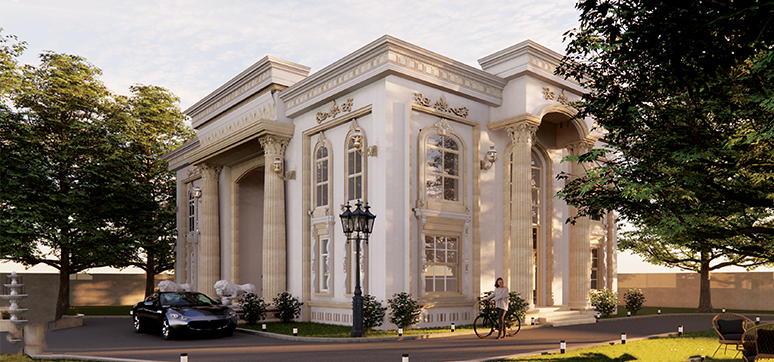
Exterior Wall Cladding Materials, Trends, Safety & Testing
Exterior wall cladding is a crucial aspect of building design that offers both practical benefits and aesthetic value. It enhances a building’s appearance, protects it from the weather elements, and contributes to its overall performance and longevity. The choice of cladding material should be made based on factors such as climate, architectural style, maintenance considerations, and environmental impact. The right cladding helps to maintain the buildings weather-tight and cost-effective. It provides thermal insulation and helps in reducing the temperature variation inside the building. It also helps to improve interior acoustics and daylighting. The cladding can influence the value, saleability and safety of the building. So cladding your property effectively is a wise investment that pays both short and longer-term dividends. Certainly, investing in new cladding for your property can be a great way to enhance its aesthetic appeal and give it a unique touch. Investing time and thought into selecting...
Posted on: 25 Oct 2023
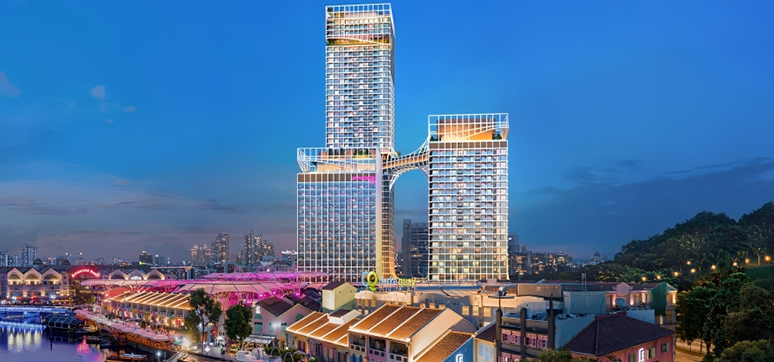
Enhancing Aesthetics and Performance: The Significance of Exterior Cladding in Buildings
The importance of cladding in buildings goes beyond functionality and serves as a crucial aspect of modern architecture. It not only protects the structure, from weather conditions but also contributes to its visual appeal. The selection of cladding material, design, and installation technique greatly impact the building’s energy efficiency, durability, and overall aesthetic impact. With a range of options architects, designers, and builders can now choose from various cladding options to seamlessly integrate structures with their surroundings while meeting sustainability and durability requirements. In this cover story, we will delve into the role of cladding as it has the potential to transform buildings into visually stunning and environmentally responsive works of art. For this, we have interviewed a few industry experts to bring to you all the important aspects related to cladding. Here are the excerpts: Types of Exterior Cladding Materials and Criteria of Selection [caption id="attachment_54224" align="alignright" width="150"] Mathieu...
Posted on: 06 Oct 2023
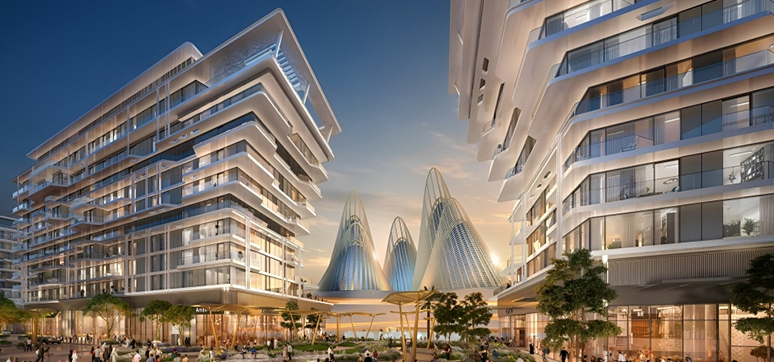
The Realm of Cladding is Experiencing a Surge in Product Advancements
Could you provide an overview of the different types of exterior cladding materials available, and what factors should be considered when selecting them? Choosing the appropriate cladding material is not just a matter of the architect's design considerations, such as the client's preferences, budget, structural loads, context, performance against environmental conditions, and the design's geometry and materials properties that match it. It is also essential to ensure that the chosen materials comply with sustainability and embodied carbon certifications and goals, including energy efficiency, long lifespan, and recyclability. From cladding sheets to composite panels, shingles, and sandwich panels, the available cladding materials offer a comprehensive selection of all types to meet all your needs. Some commonly used cladding materials include metal (such as aluminium, ACP, zinc, copper, brass, galvanized steel, and MCP), glass, stone (including granite, marble, limestone, travertine, and sandstone), plastics (such as FRP, polycarbonate, ETFE cushions, and UPVC), wood/timber...
Posted on: 12 Sep 2023
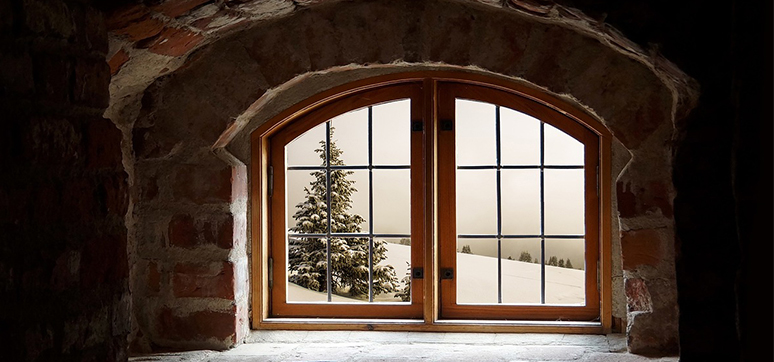
How Metal Buildings Withstand Extreme Weather Conditions
You may have heard this over & over again. Metal buildings are resilient to extreme weather. The reason lies in the strength of the raw materials – steel. It is one of the most robust materials used on earth in construction. Galvanised steel is coated with zinc to prevent rusting. What’s more, they can be designed to tolerate extreme climate events like hurricanes or tornados. In case there are minor damages, it can be repaired or rebuilt easily & faster. So, a question that might arise in your head is, what makes metal buildings so strong that they can withstand extreme weather conditions? Let’s see them one by one. Metal is Ductile [caption id="attachment_53340" align="alignleft" width="300"] Aluminium sliding[/caption] It is one of the properties of metal to stretch and bend without breaking. This feature makes metal structures ideal for seismic-prone regions and high-wind areas. Ductility ensures that metal can withstand...
Posted on: 05 Sep 2023

“In the UK, the Trend is for the Cladding Materials that Sit in Front of Thick Layers of Insulation and Have High Embodied Carbon Content”
Could you please tell our readers more about it and what are the projects they have done in the Middle East? I have completed two recent presentations at the Zak World of Façade conferences in India. In May, I presented on Balancing Operational and Embodied Carbon. This aimed to introduce the audience to the approach being taken in the UK to look at both operational and embodied carbon associated with the façade design, how embodied carbon is defined and calculated and how it is changing the design process. Then in October, I presented How the Façade Industry Can Help Save the World at Zak World of Façades in Mumbai. This looked at the various ways that façade design can impact ecology, climate change, and society and what the façade industry would need to do to be able to step up to this challenge. I have worked in the façade field...
Posted on: 30 Jan 2023

Selection of Materials and Effective Cladding Methods for Sustainable, Efficient Buildings
Energy-efficient architecture Façades serve as the structural, aesthetic, ventilating, and bracing aspects of buildings. In a highly populated country like India, it’s essential to accommodate the increasing urban densities that increase foot traffic in public areas. Urban and suburban skylines have changed due to vertical growth. A 2019 estimate claims that fenestration accounts for about 65% of the 10,000 crore rupee industry. This business is propelled by technological advancements and is mostly supported by the real estate market’s explosive demand. How do we ensure that fenestration development is sensitive to the Indian context, follows the proper path, and keeps up with the rising demand? A comprehensive view of this advancement contains the solution to this query. Fenestration is now a crucial, practical component of places rather than just an ornament. One can ensure a sustainable alternative by combining the appropriate fenestration technology with passive site-responsive and context-specific strategies. [caption id="attachment_49927"...
Posted on: 11 Jan 2023
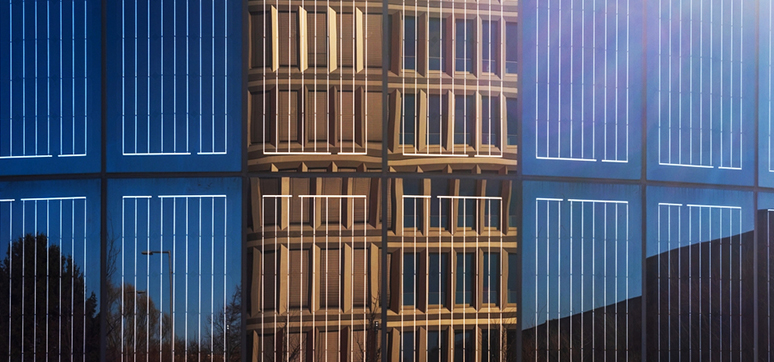
Technologies, Choices & Codes for Cladding in Today’s and Future Buildings
The exterior finish layer known as cladding is put in place to cover support structures and/or exterior walls. This finish layer has various advantages, including aesthetic enhancement, improved thermal and environmental performance, and protection from unfavourable outside factors. Numerous cladding system choices are currently offered on the market to make improvements in building technology and building materials. There is a wide variety of materials, and each has advantages and disadvantages. Your choice of building cladding depends on a wide range of elements, including the building's size, construction, function, budget, and location. But safety must come first and foremost. This cover story presents the views and opinions of subject-matter specialists on the topic of cladding. We asked them a few questions about their preferred cladding materials, norms and regulations, cladding for green buildings, and other topics. [caption id="attachment_49156" align="alignright" width="113"] Kaman Wong Senior Façade Engineer (UK), AESG[/caption] Trends in Exterior Wall...
Posted on: 12 Oct 2022

Choosing the Right Cladding
In today's world, each building must have an intelligent and responsive surface to survive. Cladding materials will never be earthquake or fire-resistant, but structurally developed surface materials with a specific function may be. Intelligent façades maybe both be responsive and pleasing to the eye. Because of their inherent qualities, readily accessible cladding materials may be responsive and interactive with the surroundings when utilised appropriately. For sustainable living, these qualities can be specified and described. Building spaces with time management, cost, availability, and maintenance, as well as designing with diverse obligations and liabilities, are today's requirements. [caption id="attachment_48209" align="alignright" width="300"] Godrej Platinum, Mumbai[/caption] As a result, many elements are reviewed before implementation The selection of cladding material is made with care, taking into account the location, weather, surrounding region, and kind of property – residential, commercial, industrial, and so on – all of which can aid in material planning. There are...
Posted on: 28 Jun 2022
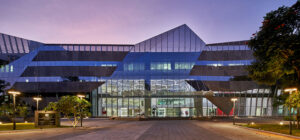
Cummins Technology Center features world’s largest faceted wall-made possible by VS1TM
Innovation Glass India Pvt. Ltd. announced the recent completion of the Cummins Technology Center in Pune, India, which broke ground in 2013. The new technical campus was designed by Venkatraman Associates. Cummins, which has technical centers in 30 countries around the world, designs and manufactures diesel and other alternative fuel engines. The company’s forward-thinking and innovative work is manifested in the stunning architecture of the new campus, which features the world’s largest faceted wall—made possible by VS1. VS1 is a patented curtain wall system that uses a blade shaped mullion and cast aluminium fittings to support insulating or monolithic glass. This simple kit of parts offers users an unprecedented level of flexibility while eliminating transoms and fitting hardware from daylight openings. After an international bidding process, It was selected over conventional solutions as the system of choice for the Cummins façades. [caption id="attachment_43604" align="alignnone" width="774"] Suspended VS1 canopies shield the...
Posted on: 12 Aug 2021
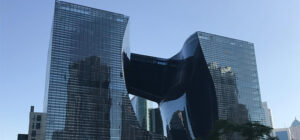
High-Rise Cladding and Glazing Systems
The cladding aims to withstand external weathering and offer durability and sustainability to the building façade. The choice in design and material of a façade is determined by factors such as the size and type of building, its geographical location, weather conditions it is exposed to etc. Energy efficiency is the main concern, besides its appearance. Today, the market offers a variety of materials for façades with abundant choices in designs and patterns. Large-size porcelain tiles and high-pressure laminates are in trend for their aesthetic value and sturdiness. Exterior Clad Laminated (ECL) high-pressure laminates and porcelain wall clads are used for the majority of structures. The products have anti-graffiti properties and offer flexibility in installation. These are high-grade and high-pressure compact laminates. Inspired by the colours and patterns of natural wood, the 6mm thick, laminates come in over 200 designs in grainy bark style or plain wood patterns. Mount matt...
Posted on: 27 Oct 2020
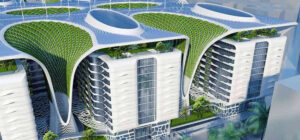
Exterior Wall Cladding Options, Solutions & Guidelines
Cladding in construction is a material applied on the exterior walls to provide a skin or layer. It provides a degree of thermal insulation and weather resistance and also improves the appearance of buildings. Cladding can be made of any of a wide range of materials available in the market, including wood, metal, stone, brick, vinyl, and composite materials that can comprise aluminium, wood, stones, blends of cement and recycled polystyrene, etc. The wall cladding market in India is still evolving and the future for the same definitely holds much promise with the high demands in the construction industry. In this edition’s cover story, we discuss the trends in cladding materials and technologies, intelligent and responsive cladding solutions, future cladding materials and designs, testing for the wall clads for strength and durability, standards and norms while procuring and installing cladding materials, and much more. [caption id="attachment_41788" align="alignnone" width="774"] One of...
Posted on: 19 Oct 2020
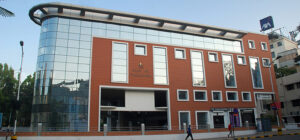
“Our Sustainable, Future-ready Solutions are Setting Trends in New-age Constructions”
In an interview with Monnanda Appaiah Managing Director at Wienerberger India, he spoke about his company, their business in the Indian market, their sustainable and future-ready solutions for new-age constructions, manufacturing facility, a few significant projects in which their products are used, and on the future of façade and cladding industry in India. Here are the excerpts from the interview: Please tell us about your company Wienerberger, and yourself. How long the company has been in this business in the Indian market? The Wienerberger Group, headquartered in Vienna, Austria, is a leading international provider of smart solutions for the entire building envelope and infrastructure. Wienerberger is the world’s largest producer of bricks (Porotherm, Terca) and the market leader in clay roof tiles (Koramic, Tondach) in Europe. Wienerberger is the world’s largest producer of bricks (Porotherm, Terca) and the market leader in clay roof tiles (Koramic, Tondach) Wienerberger started its operations...
Posted on: 13 Oct 2020

